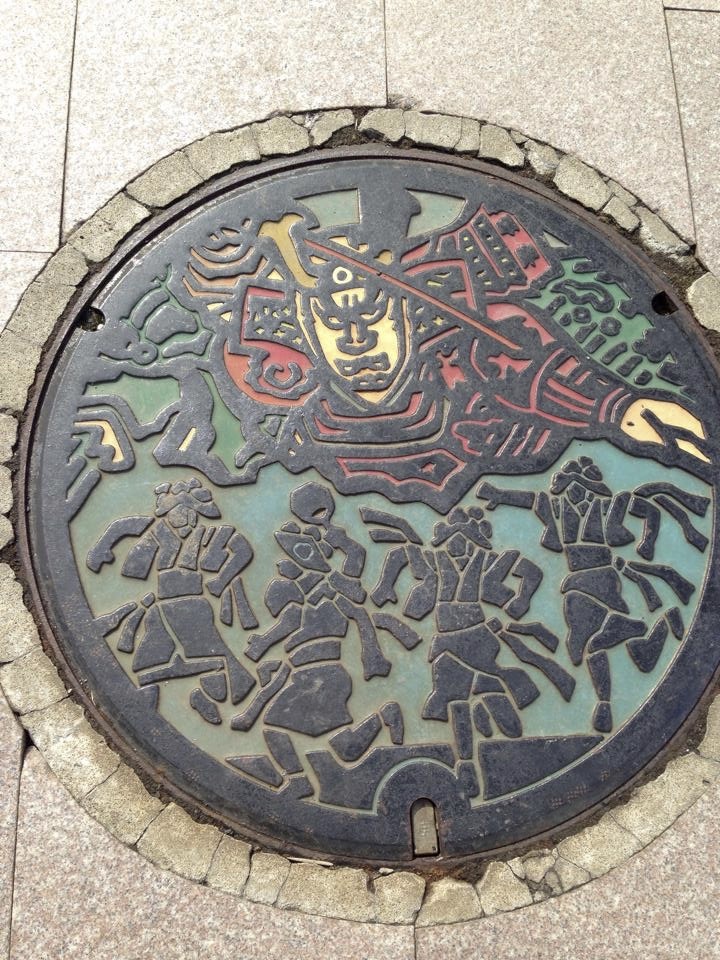With some 126,000 people, exactly 1/1000th Japan’s population, Iizuka is Fukuoka Prefecture’s fourth largest city. Nevertheless, it is a quiet town today with an aging and declining population. Back in its postwar heyday, it was the heart of a coal-mining industry that was located throughout the Chikuhō District. When the coal mines closed down in the ‘70s due to cheaper imports, Iizuka, like most towns in the area, lost its mojo.
Fukuoka City
Of all the manhole covers I have come across over the past few years, Fukuoka City's has got to have one of the most abstract, Bauhausian designs. I have looked at it a thousand times and still don't get it.
According to the city's website, the public was invited in 1990 to design a manhole cover to commemorate the city's sewage system reaching one million customers. (The things people celebrate!) The theme of the competition was "An Unconventional Design Suitable to the City which Also Improves the Image of the Sewage System". (Sheesh, what a mouthful. They should have first held a competition to come up with a better theme.)†
Some 735 submissions came in from around the country. While many of the designs featured abstact depictions of birds, sailboats, and views of the city, the winning design was chosen for the active impression it gave of the city and her people. (Really? It gives me the impression that the city is an industrial powerhouse, which it is not and never has been.)
The new manholes began replacing the old ones from April 1991.
Smaller cover marking a "confluence" of pipes features camelias, the official flower of the city, and Fukuoka's three diamond symbol in the center.
Saibu Gas (西部ガス) manhole cover.
Not sure what this is for, but it has the city's symbol in the center. The Symbol is made up of 9 or “ku” katakana フ, which read backwards is “FU-KU” as in FU-KU-oka.
An older manhole cover for an embedded fire hydrant found in Maizuru Park.
A newer design for the fire hydrant.
Yet another manhole cover for a “fire plug” or hydrant.
I wonder if this one can even be opened anymore.
In recent years, these cheap looking plastic manhole covers can be seen around town, usually near places of interest. So, on your way from Tōjin Machi Station to the dome, you can find designs related to the Softbank Hawks. Similarly, from Yakuin to the zoo, you can find manholes that feature different zoo animals.
Yamé City, Sewage
Yame, Fukuoka
For a city that has so much that distinguishes it from other towns in the prefecture—namely, Yamé cha (tea) and Yamé ningyō (dolls)—they sure did choose a boring manhole design. What is the message they are trying to convey? That the sun never sets in this city? Well, I'm sorry to say, the sun did in fact set on this sleepy town a very long time ago. The origin of the town’s name Yamé (八女, lit. “8 woman”) comes from the Nihon Shoki (日本書紀, also known as The Chronicles of Japan), the second oldest book of classical Japanese history, which claimed that a goddess named Yame Tsuhime (八女津姫) lived in the region. For more on Yamé, go here.












